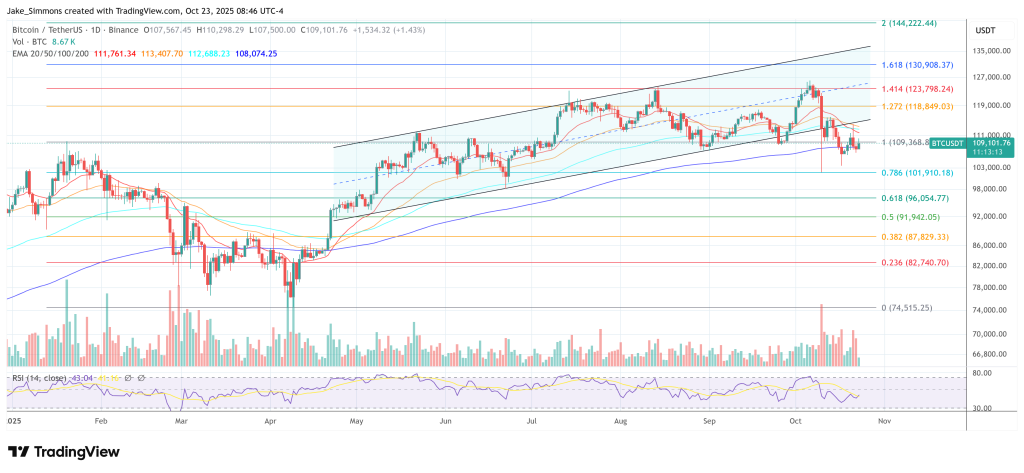Is The Crypto Bull Run Over? Lekker Capital CIO Warns ‘Don’t Miss The Forest’
Lekker Capital CIO Quinn Thompson says the market just lived through a rare “positioning rinse” that has left crypto consensus facing the wrong direction at precisely the wrong time. “There’s about 1, at most 2, times per year where I feel like I’m seeing things at 180 degree odds with the crypto twitter consensus,” Thompson wrote on October 20, pointing to prior episodes in September 2023, September 2024, and February 2025 as similar inflection points for sentiment. “I am using the below 3 tweets to summarize consensus,” he added, linking to contemporaneous bearish posts from @qwqiao, @blknoiz06, and @cburniske to frame the prevailing mood.
Why The Crypto Bull Run Highly Likely Isn’t Over
Thompson’s core claim is straightforward and deliberately contrarian: the October 10 open-interest flush was not a reason to turn medium-term bearish on Bitcoin and Ethereum, but a capitulation that typically precedes strong forward returns. “Current setup for BTC and ETH is rare – largest positioning rinse in history of crypto while standing on doorstep of macro goldilocks. 10/10 liquidation cleared more leverage in $ and % of OI than entire Jan–Apr ’25 period. Opportunity ahead is similar to pre-Trump victory ’24,” he said.
The message is not a victory lap, he emphasized: “It’s silly to even have to say this but the referenced tweets are not about being wrong or right – simply references to sentiment… Sometimes it’s better to observe more, love more and say less.”
The positioning argument rests on a simple historical heuristic: selling “after” a deep deleveraging event is usually a poor trade once forced sellers have been flushed. “Anyone want to run the math on what percentage of -30–40% open interest crypto liquidation events was it a good idea to get bearish AFTER it happened?” Thompson asked
He made his hypothesis explicit: “Getting medium time frame bearish, e.g. 40/80/120 days forward, after a large scale liquidation event is a poor risk/reward the vast majority of the time, especially if it is of the magnitude of the 10/10 event.” Market veteran Alex Krüger and Framework Ventures co-founder Vance Spencer each replied “0%,” a succinct endorsement of that probabilistic view.
Beyond positioning, Thompson ties the crypto setup to a macro backdrop he repeatedly characterizes as “goldilocks.” In late summer, he and Felix Jauvin discussed gold’s bull case on Forward Guidance; that thesis, Thompson says, crystallized when a widely circulated image showed Vladimir Putin, Xi Jinping, and Narendra Modi clasping hands at the Shanghai Cooperation Organization summit.
“When this picture leaked it was nail in the coffin and the most obvious buy gold signal you could get after its 4–5 month consolidation,” he wrote, arguing that Bitcoin now sits in an analogous posture after a ~10-month consolidation.
“Basically getting the same thing now… Don’t miss the forest for the trees,” pointing to Coinbase CEO Brian Armstrong’s policy-push post. “Heading to D.C. tomorrow, excited to roll up our sleeves with key decision makers to get market structure to @POTUS’s desk”—as part of a constructive structural backdrop for US market plumbing.
At press time, BTC traded at $109,101.

You May Also Like

What the U.S. shutdown tells us about market resilience

Ripple News: Trump’s CFTC Nominee Has History on XRP’s Side, Here’s Why
